#Urban Ink Art都市水墨
Photo

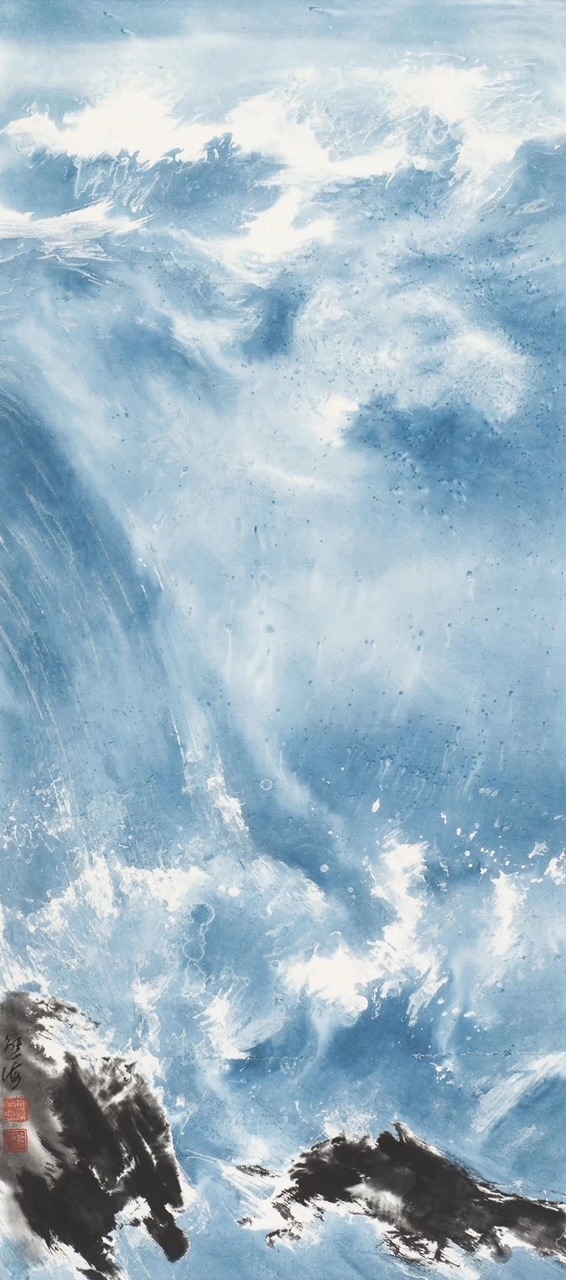
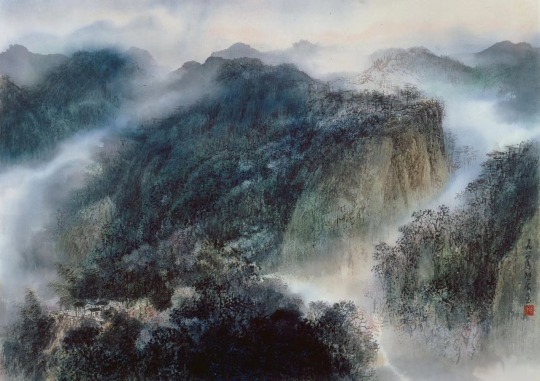
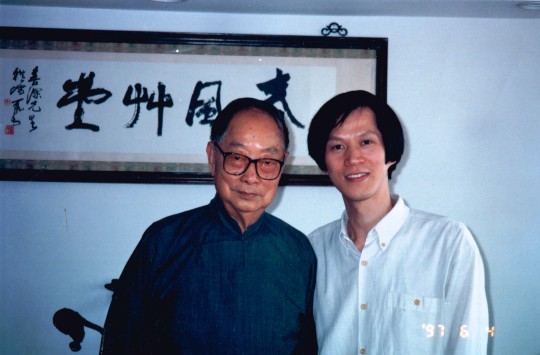

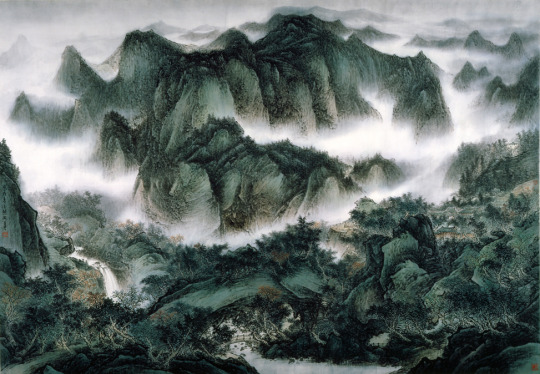

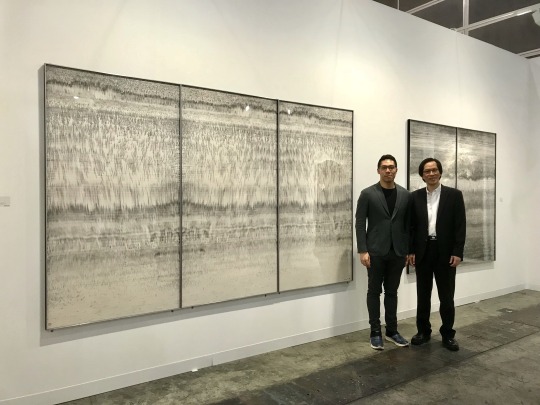
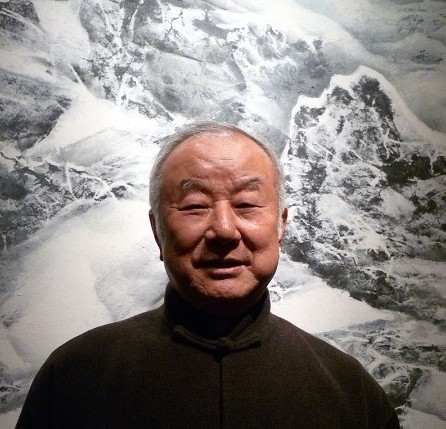
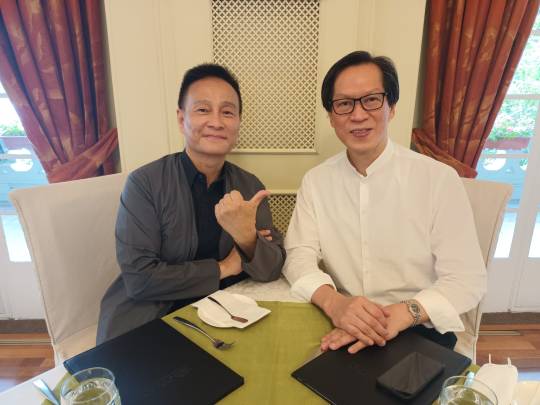
What Is Chinese Ink Painting? Why Are Artist Ink Paintbrushes Soft? What Is The Monumental Success Of ‘New Ink Painting Movement’ In Hong Kong?—Explained By Master Hung Hoi (熊海)
Some people paint what they see. Other people paint what they feel. For the Chinese, painting is a way to express philosophy and literary art such as poems. We see abstract art with our mind, and so perceive what we cannot see physically with our eyes. Abstraction demonstrates an escape route from reality in depicting paradoxically what reality is all about.
Chinese ink painting (水墨畫) is piously about the Nature which can be snow, clouds, mountains, rivers, lakes, trees, flowers, birds or insects. It symbolizes the spiritual and elegant characteristics of Chinese culture. Chinese ink paintbrushes are soft, contrary to the hard brushes in the West. They coincide with the gentle character of the Chinese and can facilitate an abstruse inquiry into philosophical notions loved by the Chinese artists and such notions are usually used to explain things in life. Artists express one-self through these objects without caring about the exact details of reality. It uses traditionally only black ink (later, colour ink is used by some) as an artistic language, together with shapes, lines, forms and symbolic marks to create a beauty in harmony with what is a break-through freedom from the visual constraints of real life. The inseparable spiritual trinity of a Chinese scholar lies in his ink images, poem and calligraphy (書法) appearing on a romantic sheet of silk or rice paper (宣紙).
Master Hung Hoi (熊海) is my favourite ink painter in Hong Kong. I love his willingness to try different styles and readiness to teach us what he has learnt. He shares with me his artistic journey and views.
Master Hung, “The classical style of Chinese ink painting flourished in the Tang Dynasty, more about 1,500 years ago. This artistic tradition in a mixture of water and ink is uniquely Chinese. The painting involves basically the same techniques as calligraphy and is done with a brush dipped in the black ink or colour pigments. Oils are not used. The usual materials on which paintings are made are silk or paper. I love ink painting. Through only black, white and grey, I can however see different colours.”
I asked, “What important role does Hong Kong play in Chinese ink painting?” Master Hung explained patiently, "Since 1842, Hong Kong, being under the British rule, had been a melting pot of people and ideas from all over. The city was a great mix of western and Chinese cultures. The ink painters here in the 60s logically had hesitations to be pleased with only traditional painting styles and concepts. They worked hard and determinedly, despite criticism, to lead a new direction now respectfully known as ‘New Ink Painting Movement’(新水墨運動). Lui Shou-Kwan (呂壽琨) who moved to Hong Kong in 1948 with an empty pocket was a pioneering figure in the movement. His semi- abstract images are metaphorical and very often used to reflect his religious belief.”
Master Hung took a sip of tea, “Great artist Liu Kuo-Sung (劉國松) taught in the Chinese University of Hong Kong in the 1970s. He used the paper-craft of paste and cut to create the visualisation of vivid snow on a painting. Wong Hau-Kwei (黃孝逵) was keen to develop ‘Urban Ink Art’ (都市水墨) which tried to present visual art forms arising from urban areas especially modern architecture. Kan Tai-Keung (靳埭��) incorporated western graphic design ideas into his ink painting. My son Hung Fai (熊輝), also an ink artist, is exploring the use of fountain pen to convey Chinese landscapes.” He chuckled, “After my recent trip to Paris, I started to mix acrylic painting techniques with Chinese ink ways.”
“Could I know your tale?” I asked. Master Hung positively smiled. He said, “My father (熊俊山) was also an ink painter. We lived on Kulangsu (鼓浪嶼) Island which was a place inhabited by artists. He taught me how to paint. As my mother was an Indonesian Chinese, we were able to migrate to Hong Kong for a fresh start in 1978. We lived in extreme poverty and I worked in an antique shop in Quarry Bay as a repairman. Art was the only path to my self-actualization. I kept on learning painting from Master Yang Shan-Shen (楊善深) who died in 2004. There came 3 turning points in my life. In 1981, my artwork was selected into the Contemporary Hong Kong Art Biennial Exhibition. In 1984, The University of Hong Kong offered me a job as a part-time art teacher in their extra-mural studies. In 1991, a famous scholar Hugh Moss agreed to be my art manager and as a result, I became a full-time artist. I loved my teaching post in universities and carried on my job till now. Students inspired me tremendously.”
The works of Master Hung Hoi are exhibited, collected and auctioned internationally. British Museum, the first public national museum in the world, bought his art pieces. He is one of the regular participants in overseas art exhibitions and the frequent ones are in the Chinese Mainland, Taiwan and Japan. He is now the adviser to a number of renowned museums and art organizations.
Master Hung’s gaze went towards the window, “Do not spoil an artist by making him to desire too much. It will hinder his need to work hard and try new things. My life is simple and basic. My goal is to have less materially but to get more spiritually. I am prepared to put myself at risk by attempting more modern concepts and techniques. The journey of ‘New Ink Painting Movement’ began with a group of selfless artists in 1960s and it is never ending. Traditional Chinese art needs progress. Progress is not just about following the past. We have to embrace brave new ideas particularly when we are in Hong Kong where cultural exchanges are super easy. The growth and energy of the Movement counts on the ink painters nowadays not to lose the passion or give up on their dreams, no matter how difficult the journey is. Aim for the sky that we, Hong Kong artists, can reach. Don’t say ‘I give up’! I wish the government of Hong Kong to set up a museum exclusively for the heroes who have taken part in New Ink Painting Movement since 1960s which is significantly a distinctive intangible cultural treasure of Hong Kong.”
While Cantonese Opera or Yueju (粵劇) is the greatest performing-art heritage of Hong Kong, ‘New Ink’ must be equally the greatest visual-art patrimony of our city. I have a dream that one day, the artists here will no longer be judged by the colour of their skin or place of origin, as most people just fancy western art and music, but by the style and quality of one’s work. People in Hong Kong have the ability to be different from other Asians and let us not settle for the ordinary! Hong Kong will remain as the ‘Pearl of the Orient’.
MLee
Chinese Version 中文版: https://www.patreon.com/posts/da-shi-xiong-hai-73245443?utm_medium=clipboard_copy&utm_source=copyLink&utm_campaign=postshare_creator
Master Hung Hoi Chinese Ink Painting Exhibition https://youtu.be/98WOdSopo3w Acknowledgement – onairpower
Hung Fai Chinese Ink Painting Sharing https://youtu.be/DKulsLPTkmk Acknowledgement – 香港視覺藝術中心
History of Hong Kong Modern Chinese Ink Painting https://youtu.be/hyCVWNdEUTc Acknowledgement-輕鬆藝術歷史
Introduction of Master Lui Shou-Kwan by Kan Tai Keung https://youtu.be/VJrfypJr8OQ Acknowledgement – The Culturist
The History of Chinese Ink Painting https://youtu.be/wIpLzItqCqk Acknowledgement – China Cultural Center in Brussels
#Lui Shou-Kwan 呂壽琨#Yang Shan-Shen楊善深#Liu Kuo-Sung 劉國松#Wong Hau-Kwei 黃孝逵#Kan Tai-Keung靳埭強#Hung Fai 熊輝#Hugh Moss#Calligraphy#Rice Paper#Urban Ink Art都市水墨#Kulangsu 鼓浪嶼#British Museum#Yueju 粵劇#The Pearl Of The Orient#Contemporary Hong Kong Art Biennial Exhibition
4 notes
·
View notes
Text
Essay代写:Image oil painting and western modern painting
下面为大家整理一篇优秀的essay代写范文- Image oil painting and western modern painting,供大家参考学习,这篇论文讨论了意象油画与西方近现代绘画。意象油画的创作题材不局限于都市生活,更多地是用水墨山水画法表现人类对于自然界的喜爱和敬畏之情。画家利用娴熟自如的表现技法,传递出淡雅豁达、灵动洒脱的文人气韵与精神格调。而西方近现代新表现主义绘画则强调从艺术家的主观感情和自我感受出发,排斥西方传统绘画的构图法则和结构比例,用夸张、变形乃至怪诞的造型和强烈、刺激的色彩烘托都市生活中紧张、混沌的意识形态以及畸形、含糊的价值观,以此来发泄内心对社会不安和不满的情绪。
In the 1860s and 1870s, impressionism entered the art world with the attitude of innovating western classical painting. After that, a large number of painting schools emerged in the western world. The innovation of these schools of painting techniques and the change of ideas have been influencing the emergence and development of image oil painting, with impressionism, post-impressionism and cubism having the most far-reaching influence. The image oil painting borrows the advantage of the western modern painting form, but also has some objections with it.
Impressionism opposed the academic teaching methods and the single painting style of classical oil painting, and advocated realism. It advocated outdoor sketching, visually describing objects exposed to the sun, and rapidly recording the ever-changing world with its free and unrestrained brush strokes and close and close modeling. In the long period of sketching, they found that weather, season, time and other factors affected the color representation of objects, and gradually mastered the rule that light affected color relations. According to their own direct observation and feeling, the painter used the scientific color law to show the rich layers and subtle changes of the light color effect, thus getting rid of the brown color that had changed less for a long time. Image oil painting refers to the artistic effect of impressionism's natural and loose brushwork and the combination of virtual and real, but ignores the influence of natural light on the shape and tone of objects. Keen on the spirit of brush and ink in traditional Chinese painting, they often express complicated social situations with simple and generalized ink color relations.
Post-impressionist painter doesn't agree with impressionist flashes of light color changing effect in the nature of objective, argues that painting should be different from photographic art and reveal the subjective world, attach importance to the performance of self, that painting is the focus of the written form but what freehand brushwork in traditional Chinese painting, artistic image need to cast off the yoke of the objective image and presents the potential of the deformation and exaggeration. The theory of post-impressionism is similar to the theory of traditional Chinese painting that art works should seek to "spit out the nature in the heart". Cezanne believed that painting could not simply blindly imitate and copy the real world, and advocated to construct a strict and orderly color relationship through clearly visible forms, in order to seek the beauty of harmony between modeling and color. Van gogh loves color, he often with passion, enthusiastic, bold and unrestrained, bright color foil oneself to society, life subjective feeling and innermost feelings. Gauguin yearns for freedom and likes to paint freely and freely. He puts untempered pigments directly on the canvas and USES memory and imagination to express his "fantasy" of "primitive" and "barbaric" with simplified and decorative techniques. Van gogh and gaogden focus on the inner spiritual world and emotional appeals, and their works are permeated with the subjective expression of the real world from the inner feelings, and lead the audience to ponder over the Epiphany with their strong symbolic connotation. Liu haisu with national aesthetic psychology and aesthetic structure on over and post-impressionist painting form of heterogeneous isomorphism analogy research, put forward after the impressionist painting is rather than the reappearance of the performance, is a comprehensive rather than analysis, is to create rather than imitate art, after a certain level admiral impressionist painting and image oil painting link. However, the image oil painting is rooted in the Chinese cultural background and aesthetic psychology. Under the inspiration of the "intangible elephant", the image hovers between "like and unlike", with its structure and outline looming. The post-impressionism did not completely abandon the scientific and rigorous structural modeling in western classical oil painting. Under the relatively conceptual and simplified image form, its structure and outline were also clearly visible.
Image oil painters pay attention to the accumulation of inner emotional needs and representation of external objects. They often summarize and extract the structure and color of objects with the potential of "knowing everything in one's heart", and contain the Chinese charm of "dao dao nature" in their simple and plain works. Inspired by Cezanne's use of geometric forms to express nature, cubist painters weakened the narrative and expression of the works, classified the forms and colors of the images geometrically, and reconstructed them geometrically, striving to create structural beauty in the pictures. Analyzing cubist painters sublimated Cezanne's method of observing object images and rational analysis into the method of "simultaneity vision", that is, observing object images from multiple perspectives, and then combining the observed elements into the same image in a unified and orderly way in the form of block planes. Although there are still some concrete objects in the works, this is also a manifestation of the decomposition and reconstruction of the objects. On the basis of analysis of cubism, comprehensive cubism adds the deconstruction of color elements to the picture.
The poetic language of traditional Chinese painting is an important basis for the creation and evaluation of image oil painting. The painter absorbs the ethereal ink spirit of Chinese painting and focuses on the release of inner soul and state of mind to pursue the implicit and simple picture effect. The painter tries to deal with the problems of color hue, lightness and purity by the simple and introverted way of thinking of the Oriental. In the picture, he is permeated with gentle and elegant, implicit and quiet charm and style. Brutalism is fond of bold and outward expression, and its painting subjects are rough and bold. Ignoring the inherent volume and color changes of the object, simplified and abstract lines and colorful and thick monochrome are used to construct a two-dimensional plane effect. The painter often extruded the pigment directly onto the picture, and the brushwork was straightforward and bold, creating a strong visual impact, balancing the expression of emotion and the decoration of the picture.
The theme of image oil painting is not limited to urban life, but to express human's love and awe for the nature with Chinese ink landscape painting. The painter used the skillful expression techniques to convey the elegant and open-minded, flexible and free style of literati. He tends to express the beauty of picture schema to obtain the beauty of poetic conception. The picture does not see the impetuous publicity color, but in the highly unified and harmonious color relationship with rich and delicate, composed and elegant black and white gray tone. New expressionist painting emphasizes from the artist's subjective feelings and self feels, rejecting western traditional painting composition rules and structure proportion, with exaggeration, deformation and grotesque shape and strong, the color of the stimulus foil in urban life tension, the ideology of chaos and deformity, vague values, to give vent to the heart of social unrest and discontent. Neo-expressionist painting is the product of social and cultural crisis and spiritual disorder, which is especially prominent and strong in the era of social turbulence.
Image oil painting is rooted in Chinese traditional cultural background and national aesthetic psychology. It is good at expressing emotions in freehand brushwork and plays a role in influencing people's hearts and comforting the soul. Neo-expressionist oil painting focuses on people's spiritual thoughts and the spiritual expression of bondage, repression and loneliness caused by the society. It is good at expressing people's hope and struggle for freedom in the society. Compared with neo-expressionism oil painting, there is more a calm atmosphere, calm and harmonious Oriental charm. It can be seen that image oil painting is a metaphysical art, while neo-expressionist painting is physical.
51due留学教育原创版权郑重声明:原创essay代写范文源自编辑创作,未经官方许可,网站谢绝转载。对于侵权行为,未经同意的情况下,51Due有权追究法律责任。主要业务有essay代写、assignment代写、paper代写、美国作业代写服务。
51due为留学生提供最好的essay代写服务,亲们可以进入主页了解和获取更多essay代写范文 提供代写服务,详情可以咨询我们的客服QQ:800020041。
0 notes